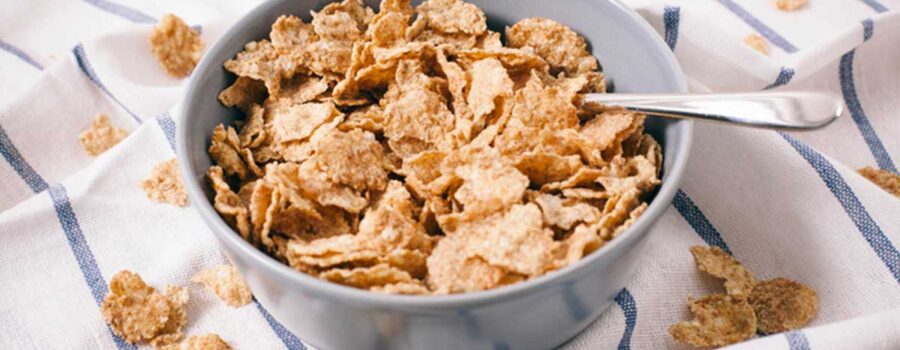The Lowdown on Cereal Freshness
Cereal is a go-to breakfast choice for many people, thanks to its convenience and long shelf life. But did you know that preservatives like butylated hydroxyanisole (BHA) and butylated hydroxytoluene (BHT) are responsible for keeping your cereal fresh? With safety concerns about these additives cropping up, it’s time to dive into their purpose, potential risks, and alternatives. So, let’s talk about the safety of BHA and BHT in cereals and arm you with the information you need to make the best breakfast choices.
BHA and BHT: What’s the Deal?
BHA and BHT are synthetic antioxidants that help preserve food and extend its shelf life. They work by stopping the oxidation of fats and oils, which can cause food to spoil and lose its nutritional value. You can find these chemicals in various processed foods like cereal, potato chips, and vegetable oils.
Keeping Cereal Fresh with BHA and BHT
Cereal contains fats that can go rancid, affecting its taste and nutrition. BHA and BHT slow down the oxidation process, keeping your cereal fresh, tasty, and nutritious for longer.
The Big Question: Are BHA and BHT Safe?
For years, there have been concerns about the safety of BHA and BHT. While some studies link these additives to health risks, others suggest they’re safe when consumed in low amounts.
Let’s take a closer look at these potential risks.
The International Agency for Research on Cancer (IARC) classifies BHA as a possible human carcinogen. This is based on animal studies where high levels of BHA increased tumor risk. However, these amounts were much higher than what’s typically found in food products.
BHT has also been linked to potential health risks, although the evidence isn’t as strong. Some animal studies found that high doses of BHT could cause liver and kidney damage. On the other hand, other studies suggest BHT has low toxicity and even some health benefits, like antioxidant and anti-inflammatory properties.
Regulatory agencies like the FDA and EFSA have evaluated BHA and BHT, and they’ve deemed them safe for consumption in typical food product amounts [8]. But it’s important to remember that these assessments rely on current scientific knowledge, and new research could change the conclusions.
Alternatives to BHA and BHT in Cereal
If you’re concerned about BHA and BHT, there are other options for preserving cereal freshness. One popular alternative is using natural antioxidants like vitamin E (tocopherols) and rosemary extract. These natural preservatives might not be as effective as BHA and BHT, but more cereal manufacturers are switching to them to meet consumer demand for cleaner ingredients.
Another way to avoid BHA and BHT is to choose cereals with ingredients that resist oxidation. Whole grain cereals, for example, have a longer shelf life than refined grain cereals because they contain more natural antioxidants. Some cereals also have added ingredients like nuts, seeds, and dried fruit, which can extend shelf life without synthetic preservatives.
Choosing the Right Cereal for You
When selecting a cereal, read the ingredient labels carefully. Look for cereals with natural preservatives like tocopherols or rosemary extract or those that don’t contain BHA or BHT. Opting for whole-grain cereals with added nuts, seeds, and dried fruit can also help ensure a longer shelf life without synthetic preservatives.
Although BHA and BHT have been deemed safe for consumption in typical food product amounts by regulatory agencies, some studies have raised concerns about their potential health risks. As a result, consumers may want to consider alternative options for preserving the freshness of their cereal. By being aware of the ingredients in your cereal and understanding the potential risks and benefits associated with BHA and BHT, you can make informed decisions about the foods you choose to consume.
The Naughty List
- Kellogg’s Corn Flakes
- Kellogg’s Frosted Flakes
- Kellogg’s Rice Krispies
- General Mills Cheerios
- General Mills Cinnamon Toast Crunch
- General Mills Lucky Charms
- Post Fruity Pebbles
- Post Cocoa Pebbles
- Quaker Cap’n Crunch
- Quaker Life Cereal
The Good List
- Kashi 7 Whole Grain Puffs
- Nature’s Path Organic Heritage Flakes
- Barbara’s Bakery Puffins Cereal
- Cascadian Farm Organic Cinnamon Crunch
- Arrowhead Mills Organic Spelt Flakes
- Bob’s Red Mill Old Country Style Muesli
- 365 Everyday Value (Whole Foods) Organic Morning O’s
- Nature’s Path Organic Mesa Sunrise Flakes
- Trader Joe’s Organic O’s
- Back to Nature Classic Granola
So, the next time you’re in the cereal aisle, take a moment to check the ingredients and make a choice based on your preferences and any concerns you may have about BHA and BHT. Keep in mind that product formulations can change, so it’s always a good idea to double-check the label for the most up-to-date information. Happy breakfasting!
References
- Branen, A. Larry, P. Michael Davidson, Seppo Salminen, and John H. Thorngate. Food Additives. 2nd ed., CRC Press, 2002.
- O’Neil, Catherine E., et al. “Out-of-Hand Nutritional Comparison of Brands of Fortified Cereals.” Journal of the American Dietetic Association, vol. 104, no. 6, 2004, pp. 955-959.
- Labuza, Theodore P., and Lynn M. Breene. “Applications of ‘Active Packaging’ for Improvement of Shelf-Life and Nutritional Quality of Fresh and Extended Shelf-Life Foods.” Journal of Food Processing and Preservation, vol. 13, no. 1, 1989, pp. 1-69.
- International Agency for Research on Cancer (IARC). “Butylated Hydroxyanisole (BHA).” IARC Monographs on the Evaluation of Carcinogenic Risks to Humans, vol. 40, 1986, pp. 161-206.
- Wichi, H. P. “Enhanced Tumour Development by Butylated Hydroxyanisole (BHA) from the Prospective of Effect on Forestomach and Oesophageal Squamous Epithelium.” Food and Chemical Toxicology, vol. 26, no. 8, 1988, pp. 717-723.
- Williams, Gary M., Robert Kroes, and Ian C. Munro. “Safety Evaluation and Risk Assessment of the Herbicide Roundup and Its Active Ingredient, Glyphosate, for Humans.” Regulatory Toxicology and Pharmacology, vol. 31, no. 2, 2000, pp. 117-165.
- Saito, Tetsuji, et al. “Hepatoprotective Effects of the Antioxidant Butylated Hydroxytoluene (BHT) on Carbon Tetrachloride-Induced Liver Damage in Rats.” Journal of Toxicologic Pathology, vol. 21, no. 4, 2008, pp. 273-280.
- European Food Safety Authority (EFSA). “Scientific Opinion on the Re-Evaluation of Butylated Hydroxytoluene BHT (E 321) as a Food Additive.” EFSA Journal, vol. 9, no. 10, 2011, pp. 2392.
- Kanner, Joseph, and Simcha Harel. “Initiation of Membrane Lipid Peroxidation by Activated Metmyoglobin and Methemoglobin.” Archives of Biochemistry and Biophysics, vol. 290, no. 2, 1991, pp. 343-349.
- Liu, Rui Hai. “Health Benefits of Fruit and Vegetables are from Additive and Synergistic Combinations of Phytochemicals.” The American Journal of Clinical Nutrition, vol. 78, no. 3, 2003, pp. 517S-520S.








